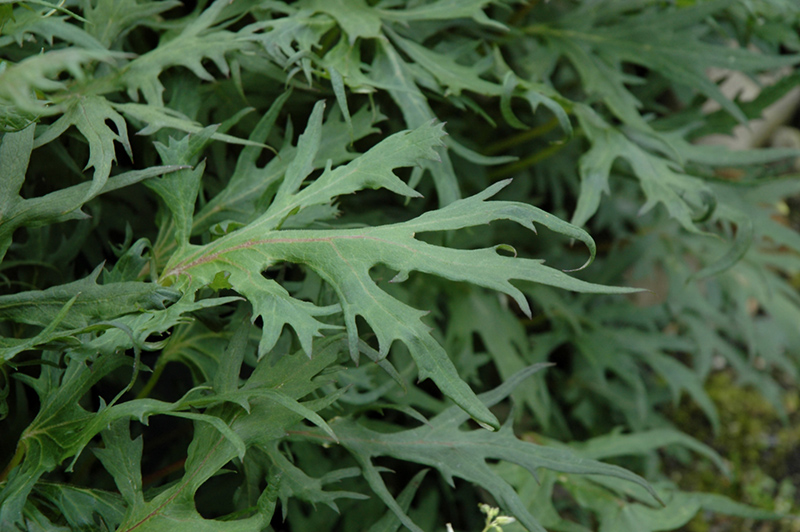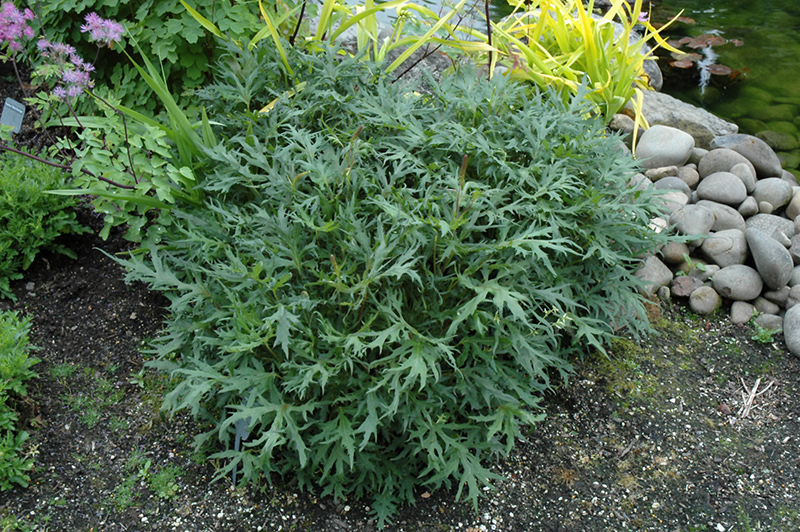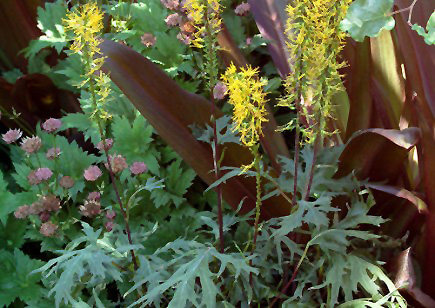Dragon's Breath Rayflower
Ligularia przewalskii 'Dragon's Breath'
Plant Height: 32 inches
Flower Height: 4 feet
Spread: 24 inches
Sunlight:
![]()
![]()
Hardiness Zone: 4a
Description:
Interesting dragon-shaped leaves on this variety; an elegant look with deep green cut leaves and golden flowers contrasting near-black stems; stunning in groupings or as an accent planting; has an exotic tropical look
Ornamental Features
Dragon's Breath Rayflower features bold spikes of lightly-scented gold flowers rising above the foliage from early to mid summer. Its deeply cut lobed palmate leaves remain dark green in color throughout the season. The black stems are very colorful and add to the overall interest of the plant.
Landscape Attributes
Dragon's Breath Rayflower is an herbaceous perennial with a rigidly upright and towering form. Its wonderfully bold, coarse texture can be very effective in a balanced garden composition.
This is a relatively low maintenance plant, and is best cleaned up in early spring before it resumes active growth for the season. Deer don't particularly care for this plant and will usually leave it alone in favor of tastier treats. It has no significant negative characteristics.
Dragon's Breath Rayflower is recommended for the following landscape applications;
- Vertical Accent
- Mass Planting
- General Garden Use
- Bog Gardens
Planting & Growing
Dragon's Breath Rayflower will grow to be about 32 inches tall at maturity extending to 4 feet tall with the flowers, with a spread of 24 inches. It grows at a medium rate, and under ideal conditions can be expected to live for approximately 20 years. As an herbaceous perennial, this plant will usually die back to the crown each winter, and will regrow from the base each spring. Be careful not to disturb the crown in late winter when it may not be readily seen!
This plant does best in partial shade to shade. It prefers to grow in moist to wet soil, and will even tolerate some standing water. It is not particular as to soil pH, but grows best in rich soils. It is somewhat tolerant of urban pollution. This is a selected variety of a species not originally from North America. It can be propagated by division; however, as a cultivated variety, be aware that it may be subject to certain restrictions or prohibitions on propagation.




